Esta entrada se entiende mejor tras leer la anterior dedicada al tema: Yemen, un poco de contexto.
Denominar como hutíes o milicia proxi de Irán a la facción político-militar más poderosa de las tres que gobiernan en lo que hasta hace poco era la República de Yemen, puede estar bien para la propaganda de guerra, pero hace un flaco favor a cualquier intento de entender lo que sucede en esta parte del mundo. Sería más correcto llamarlo por su nombre: el Gobierno de Salvación Nacional (una especie de Gobierno Provisional) y el Consejo Político Supremo (SPC; en árabe: المجلس السياسي الأعلى ; transliterado: al-Majlis as-Siyāsiyy al-‘A’lā), cuyo núcleo duro está formado por una coalición entre:
a) Una facción mayoritaria del Congreso General del Pueblo (CGP) ( المؤتمر الشعبي العام; Al-Mu’tamar Aš-Ša’abi Al-‘Aam), partido hegemónico hasta la última etapa del conflicto y la muerte de Alí Abdalá Salé, también escrito como Ali Abdullah Saleh (asesinado el 4 de diciembre de 2017).
y b) Ansar Allah[a] (أنصار الله ʾAnṣār Allāh), el partido hegemónico, ideológicamente hablando, actualmente en el Consejo Político Supremo que gobierna desde Saná y heredero del proyecto de Hussein Badreddin al-Houthi, en árabe: حسين بدر الدين الحوثي
Esto mismo, explicado con palabras de @Aldanmarki:
El gobierno que ostenta la autoridad administrativa en territorio «Houthi» es el Gobierno de Salvación Nacional, que es multipartidista con representantes de ambos bandos. El poder ejecutivo es el Consejo Político Supremo.
A su vez, el Consejo Político Supremo tiene 10 escaños que se reparten al 50% entre el Politburó de Ansarallah y el Congreso General del Pueblo, un partido nacionalista de gran envergadura y uno de los mayores partidos políticos tradicionales del país.
El sistema es semipresidencialista: Mahdi Almashat, presidente del Consejo Político Supremo, actúa como jefe de Estado de facto, mientras que Abdel-Aziz bin Habtour es el jefe del Gobierno. En el gobierno hay miembros del CGP, Ansarallah, Partido Socialista, etc.
El programa político de esta entidad estatal, sorprendentemente alejado de los estereotipos de una milicia proxi o de unos terroristas irracionales o fanáticos, se puede descargar a continuación en formato pdf:
Como no es el único poder institucional en Yemen, en estos mapas podemos ver quién controla el qué:
El primero, actualización del dataset (16 de enero de 2024) del ACAPS: aquí se denomina al Consejo Político Supremo como «De-facto authority (DFA)».
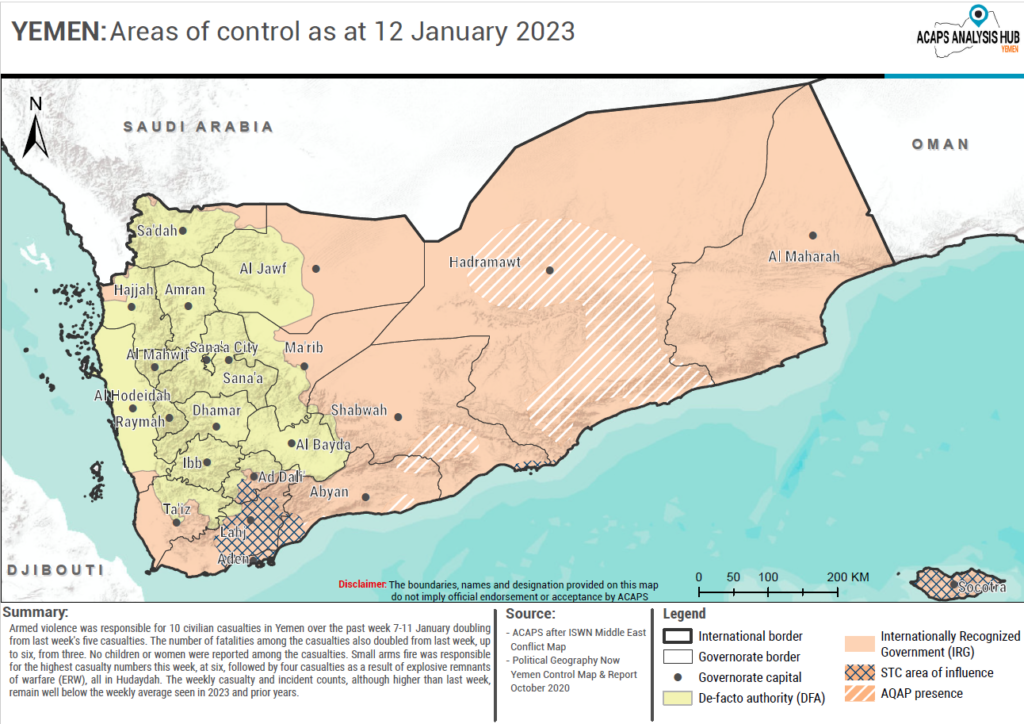
El siguiente es un mapa realizado por Rybar, ayer 21 de enero de 2024, desde la Federación de Rusia:

Es interesante ver cómo, además de los tres poderes institucionales, quedan remanentes de grupos armados cercanos a Los Hermanos Musulmanes, otras milicias y los siempre presentes grupos terroristas afiliados a Al Qaeda y al ISIS (curiosamente dentro del territorio del «gobierno legítimo» o «República de Yemen» reconocida por Occidente y tutelada por Arabia Saudí).
El tercer mapa es de Jane’s, creado para reflejar los ataques de USA y UK sobre territorio yemení (del 12 de enero de 2024). Aquí, al Consejo Político Supremo se le denomina Ansar Allah (no todo el Consejo es Ansar Allah, pero todo Ansar Allah apoya o forma parte de esa estructura estatal). Lo importante no es sólo el peso territorial y el valor de ese territorio, sino que prácticamente todo el ejército anteriormente fiel a Abdalá Saléh es fiel a la nueva entidad político militar que gobierna desde Saná. Recientemente nuevas tropas se han adherido al Ejército del Consejo Político Supremo gracias a sus acciones militares para evitar el genocidio palestino.
Aquí vemos con más claridad los tres polos principales de poder institucional en Yemen:
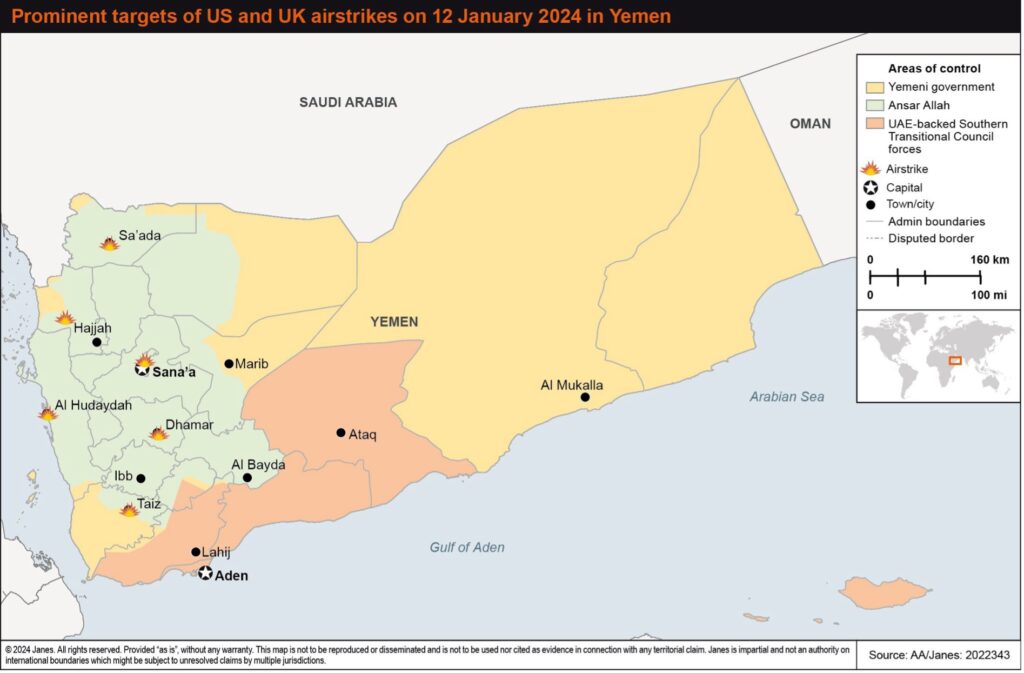
Tenemos al Sur, en torno al estratégico puerto de Adén, a la entidad sostenida por Emiratos Árabes Unidos (UAE) llamada The Southern Transitional Council, aquí puedes visitar su web de exteriores para la Unión Europea. En esa web se presentan a sí mismos así:
The Southern Transitional Council (STC) represents the claims to independence of South Yemen (known as South Arabia until 1967; today’s governorates of Aden, Lahij, the southern part of al-Dhali, Abyan, Shabwa, Hadramawt, al-Mahra and Socotra). Moreover, the STC acts in the interests of the local population and is providing security and stability in the South Yemeni territories, in the region of the Gulf of Aden and the Bab al-Mandab. The STC was proclaimed on May 4, 2017, and, subsequently, formed under the presidency of Aydarus al-Zubaydi. The council combines numerous political and civil society decision-makers from South Yemen. It consists of a Leadership Council of 24 persons, various departments, and the National Assembly. The National Assembly of 303 representatives from across the entire South Yemeni society was formed on November 30, 2017. Both bodies were formed on the basis of decisions by consensus. The major objective of the STC is the solution of the southern cause in peaceful ways and the restoration of the independence of South Yemen as a state with its pre-1990 borders.
Dr. Aydarus al-Naqib heads the General Administration for Foreign Affairs of the STC. The main office in the European Union is headquartered in Berlin, Germany, and operates under the authority of the General Administration of Foreign Affairs. The office is a registered association in Germany under the designation “Büro der Außenbeziehungen des Übergangsrates Südarabiens in Europa e.V.” (Office of External Relations of the STC in Europe). The objective of the association is to foster fruitful and constructive exchange with European institutions, ministries, parties, research centers and institutions, civil society organizations, (political) foundations and media. Furthermore, the association wants to encourage lively dialogue with various European political and civil institutions in order to find a common solution for the war in Yemen and the southern cause.

En la zona desértica al este (con las manchas de territorio AL Qaeda e ISIS), en algún reducto del oeste, y gobernando desde un hotel de lujo en Ryad (capital de Arabia Saudí) tenemos al Gobierno de la República de Yemen, aquí podéis visitar su web de Exteriores y Expatriados.

Esta declaración reciente (17 de enero de 2024) les retrata bien en la arena internacional:
Yemen welcomes the decision of the United States of America to designate the Houthi militias as a Specially Designated Global Terrorist group.
This designation is consistent with the Yemeni government’s classification of the Houthi militias and comes in response to the Yemeni government’s call on the international community to take serious measures to protect the Yemeni people from their oppression and terrorism.
Ever Since the Houthi coup in 2014, and in the absence of a real deterrent for them, the Houthis have not stopped their terrorism, and crimes against Yemenis: by bombing homes and places of worship; persecuting religious minorities, opponents and critics of their practices and confiscating their properties; arresting and torturing journalists and political activists; besieging cities; planting mines on land and sea; threatening international shipping routes; using health and educational facilities for military purposes, and civilians as human shields; and destroying economic institutions in Yemen.
The Government emphasizes that in order to bring peace, the Houthi militias must abandon their terrorist behavior and their dependence on the Iranian regime, renounce violence, and accept peace initiatives, including the road map proposed by the Kingdom of Saudi Arabia, and all other efforts to maintain the security and stability of Yemen and the region.
Un poco de geografía y economía
Mucha desinformación se centra en minusvalorar el peso del Consejo Provisional Supremo porque «sólo controla Saná y una zona reducida del país». Estos mapas nos dan una idea de qué parte del país controlan y el peso que tiene comparado con el desierto que controlan los títeres de Arabia Saudí.
Este mapa del Yemen Country Economic Memorandum: Glimmers of Hope in Dark Times– 2023 (Full Report in a PDF Format) del Banco Mundial indica las zonas económicas:
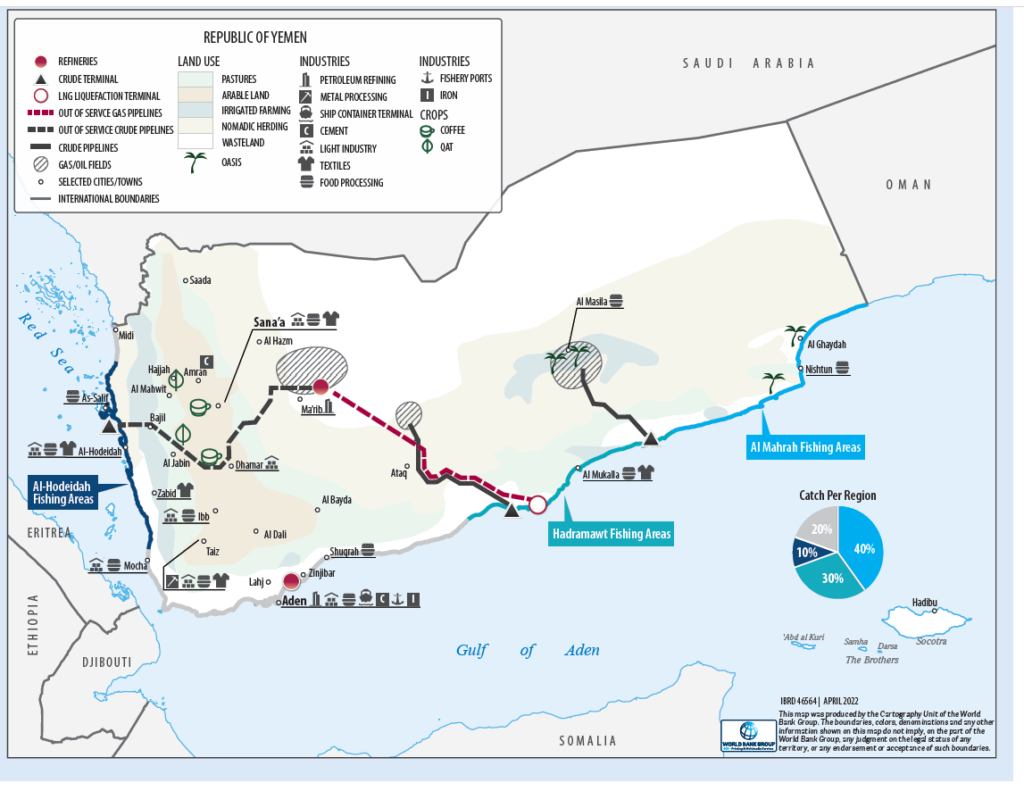
En estos dos mapas se señalan las rutas de transporte principales, en el primer mapa se indican las rutas pre-conflicto y en el segundo, las actuales:
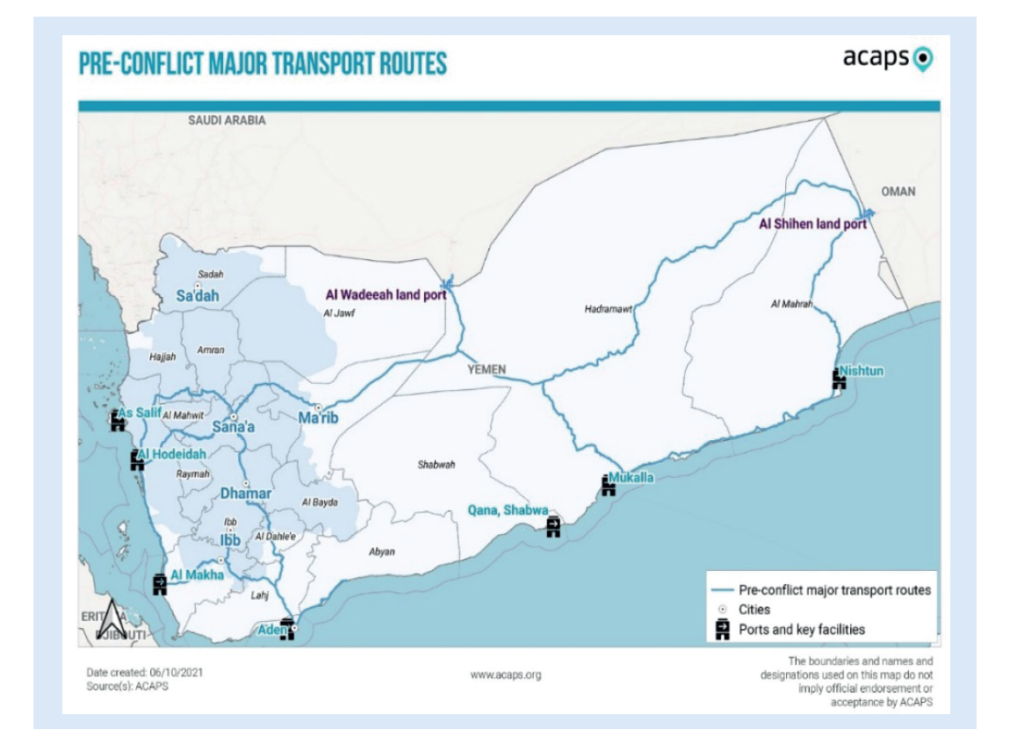
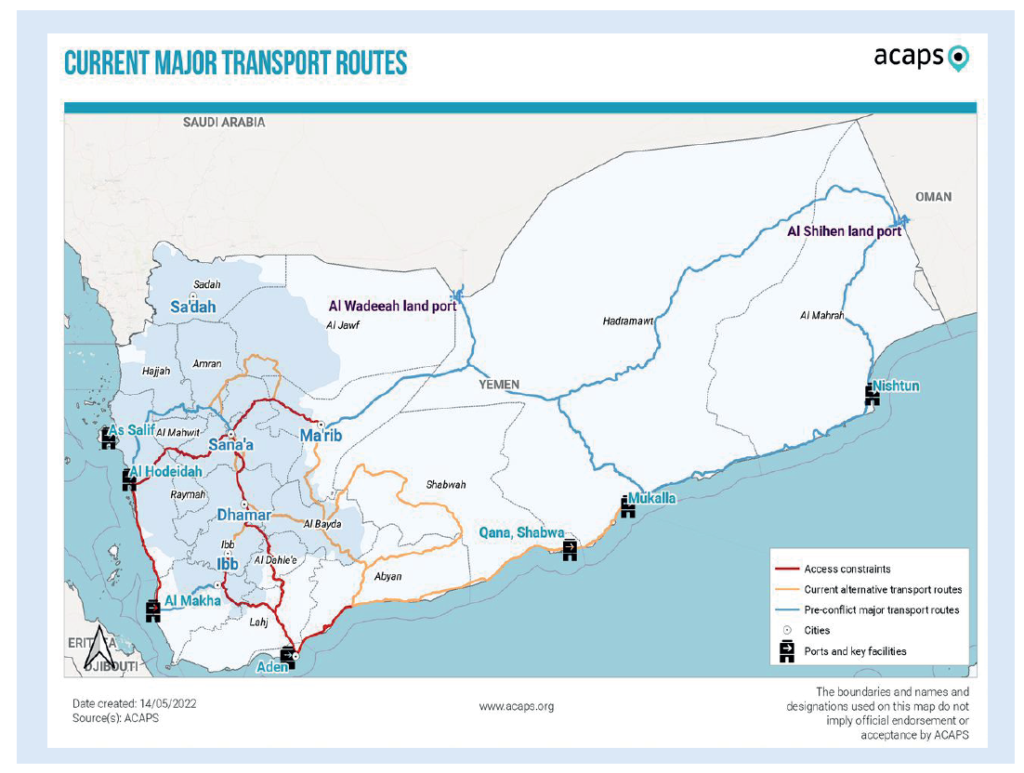
Las rutas de distribución de bienes y combustibles:
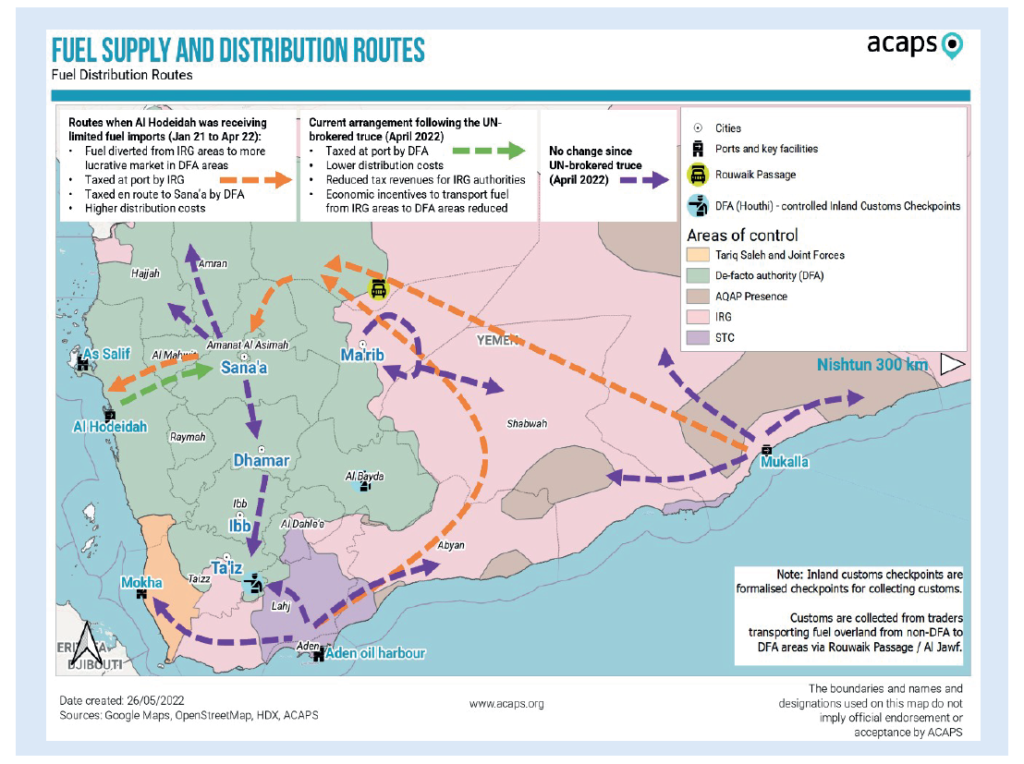
El control de las dos de las principales vías terrestres:
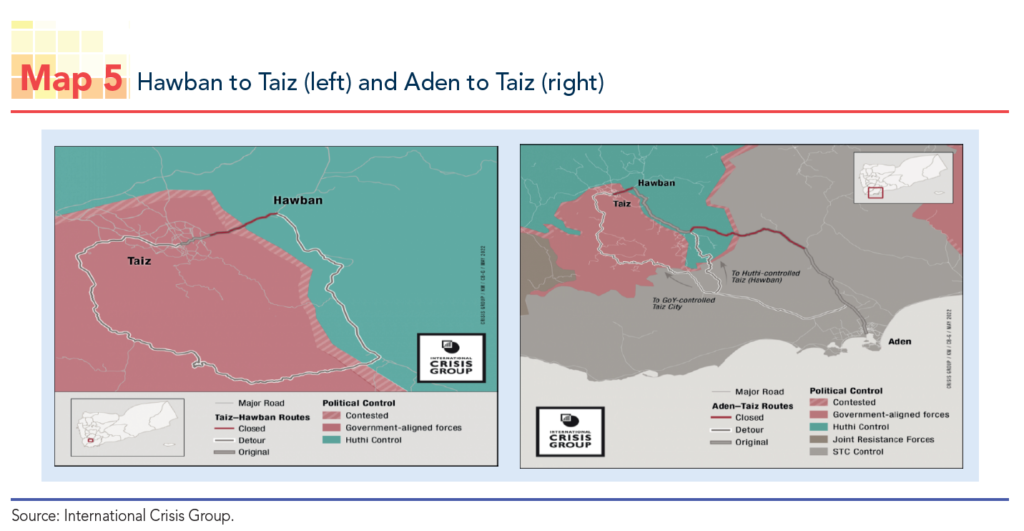
Aquí podemos ver un mapa completo de todas las rutas de transporte:
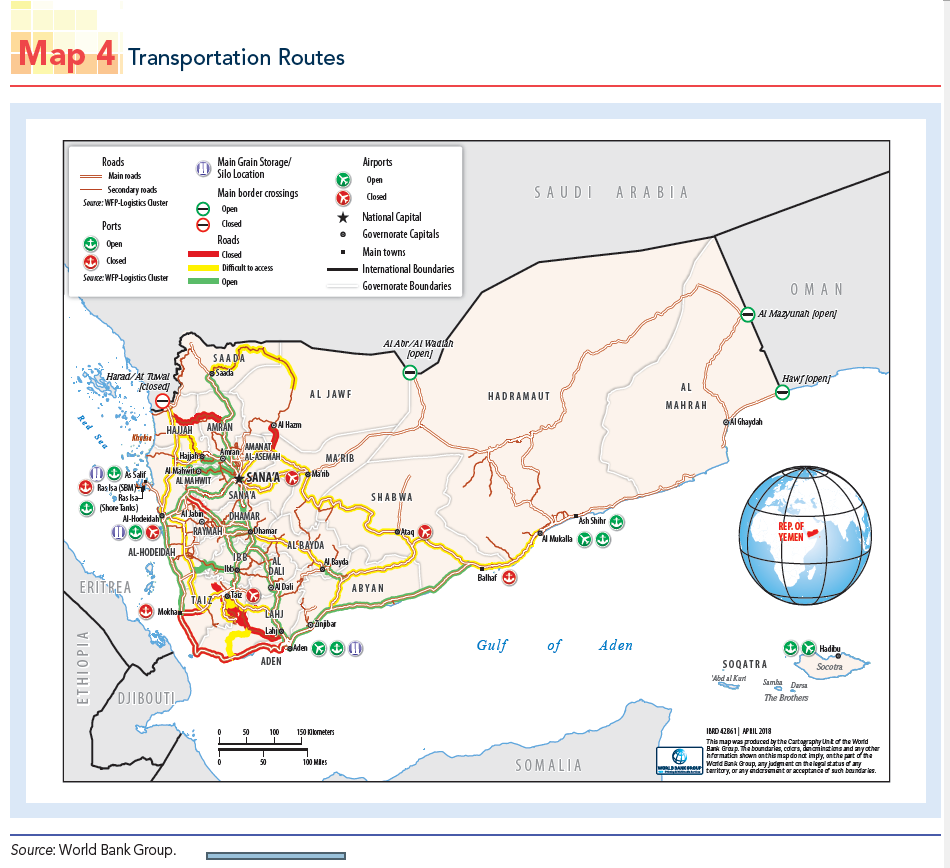
Para terminar con los mapas, adjuntamos una serie indicando las precipitaciones medias, un baremo importantísimo para comprender la distribución de la población y la riqueza en esa parte del mundo:
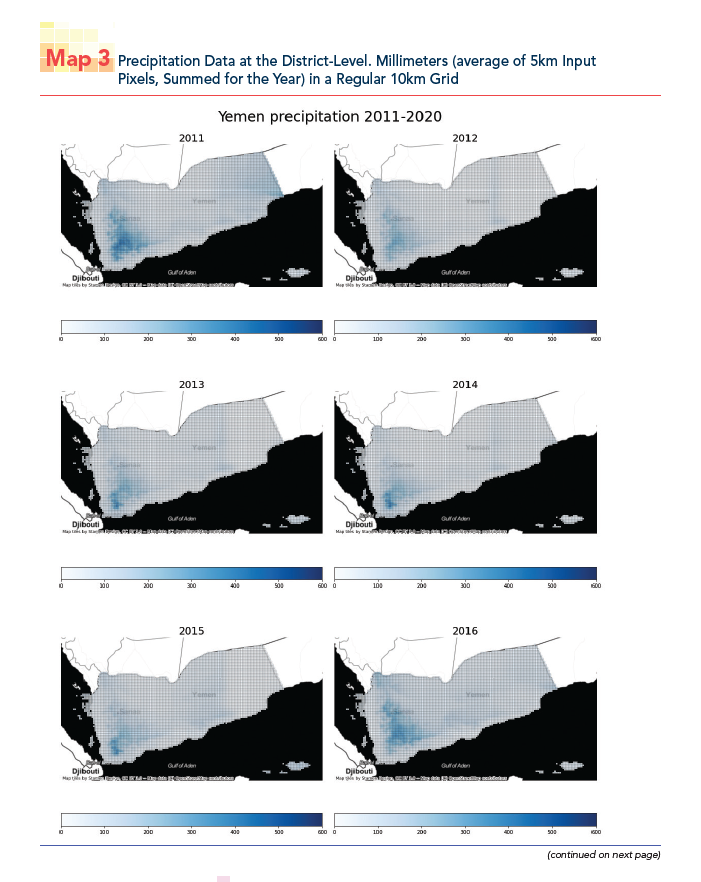

Terminamos con varios informes que ayudan a hacerse una composición de lugar informada, más alejada de la propaganda de guerra y más cercana al verdadero protagonista de esta historia: el Pueblo de Yemen.
1.Un informe sobre la educación en el país:
2. El enlace al informe del SIPRI:
Climate, Peace and Security Fact Sheet: Yemen (2023)
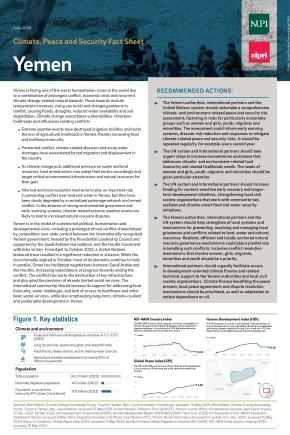
Dr Kyungmee Kim, Katongo Seyuba, Kheira Tarif, Dr Minoo Koefoed, Asha Ali and Jules Duhamel; Publisher: SIPRI, Stockholm: June, 2023
Abstact:
This Climate, Peace and Security Fact Sheet examines the prolonged political, humanitarian and developmental challenges faced by Yemen. It offers a range of recommended actions for the international community to address these issues effectively.
Yemen is grappling with a severe humanitarian crisis triggered by ongoing conflict, economic instability and climate change-related disasters. The country is experiencing escalating temperatures, rising sea levels and shifting rainfall patterns, resulting in devastating floods, droughts, water scarcity and soil degradation. These extreme weather events have wreaked havoc on irrigation systems and agricultural livelihoods, amplifying the insecurity surrounding food and sustainable livelihoods. The conflict—coupled with climate-related disasters and water shortages—has further exacerbated forced migration and displacement. There is also the risk that armed groups can exploit climate change pressures by targeting crucial environmental infrastructure and resources. Moreover, the conflict has significantly weakened informal resolution mechanisms—worsened by patronage networks. It is imperative that the international community provides support to address pressing concerns such as food insecurity, water challenges and limited access to healthcare. Climate-resilient and sustainable development is an indispensable requirement for fostering lasting peace in Yemen.
Y, para terminar, 3. El último informe del trabajo de la ONU en Yemen:
UN YEMEN COUNTRY RESULTS REPORT 2022
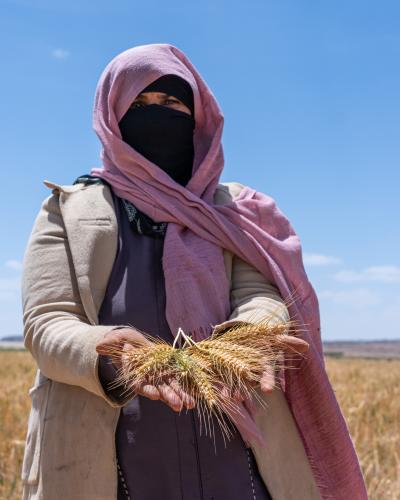
Abstract:
Yemen has been embroiled in an eight-yearlong armed conflict that has resulted in increased economic turmoil, human displacement, infrastructure damage, and widespread suffering.
By the end of the year, more than two-thirds of Yemen’s population (21.6 million people, including 12.9 million children) required humanitarian assistance, whilst an estimated 4.5 million people, including 2 million children – 14% of the population, were internally displaced.
The conflict has divided the country, exacerbated poverty, crippled the economy, destroyed critical infrastructure and livelihoods, and weakened the population’s and institutions’ resilience and capacities. More than USD 25 billion would be required for recovery and reconstruction.
The governance system is weak and fragmented, with tense central-subnational relations and competing policies. Political bureaucracy and interference by conflict parties hampered UN operations on the ground, causing costly delays, increasing the risk of security threats to staff and implementing partners, and limiting female staff mobility.
Citizens’ trust in institutions was eroded, resulting in macroeconomic instability and suboptimal service delivery, which exacerbated the conditions of the most vulnerable groups.
The crisis has had a particularly negative impact on progress towards the 2030 Agenda, with both humanitarian and development needs increasing, making it difficult to prioritise programming strategies and secure critical funds. Yemen is ranked 183 out of 191 countries in the Human Development Index with a score of 0.455 in 2021/2022.
